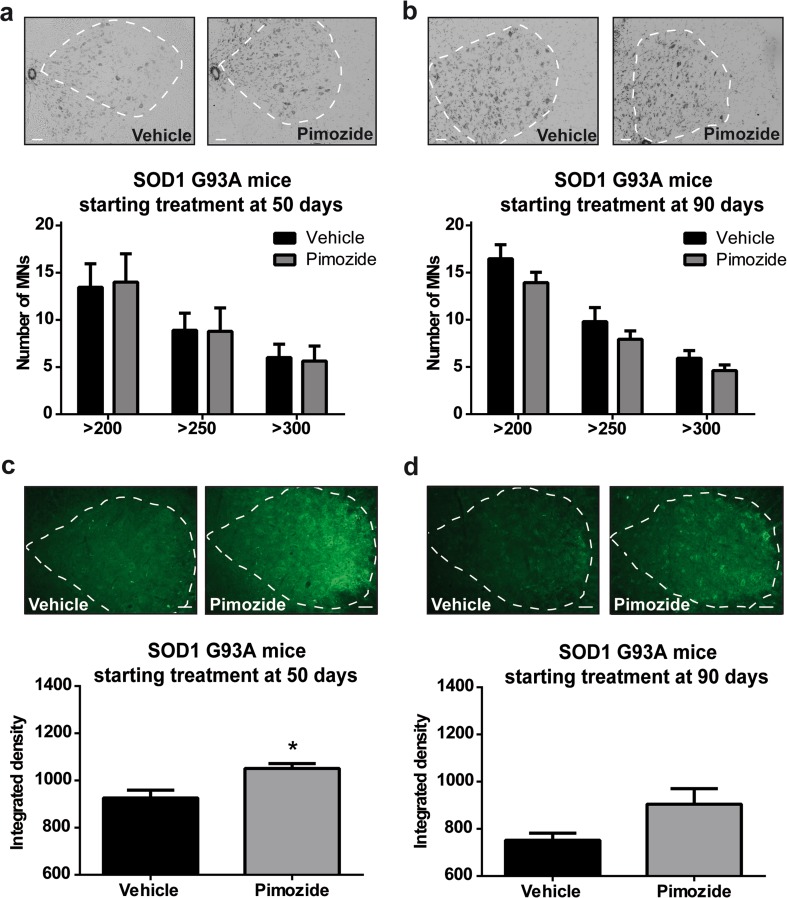Fig. 6.
Pimozide treatment did not reduce motor neuron loss nor misfolded SOD1 in SOD1G93A mice. (a, b) Representative picture of Nissl staining in lumbar spinal cord and relative quantification of motoneurons larger than 200–250–300 μm2 in mice at 120 days of age treated from 50 days of age (a) or from 90 days of age (b). Ten sections per mouse (n = 3 mice per group) were analyzed; dotted line represents area of analysis (ventral horns); data are mean ± sem and were analyzed by two-way ANOVA followed by uncorrected Fisher’s LSD post hoc test, scale bar 50 μm. No differences were observed in the number of motoneurons (two-way ANOVA analysis: interaction p = 0.977, motoneuron size p = 0.012, treatment p = 0.988 for treatment from 50 days and interaction p = 0.862, motoneuron size p < 0.0001, treatment p = 0.059 for treatment from 90 days). (c, d) Representative picture of B8H10 staining in lumbar spinal cord and relative quantification of misfolded SOD1 (integrated density of B8H10 staining) in mice at 120 days of age treated from 50 days of age (c) or from 90 days of age (d). Ten sections per mouse (n = 3 mice per group) were analyzed; dotted line represents area of analysis (ventral horns); data are mean ± sem, scale bar 50 μm. B8H10 signal is significantly increased in mice treated from 50 days of age (c) (p = 0.032 by unpaired T test) and slightly increased in mice treated from 90 days of age (d) (p = 0.104 by unpaired T test)

